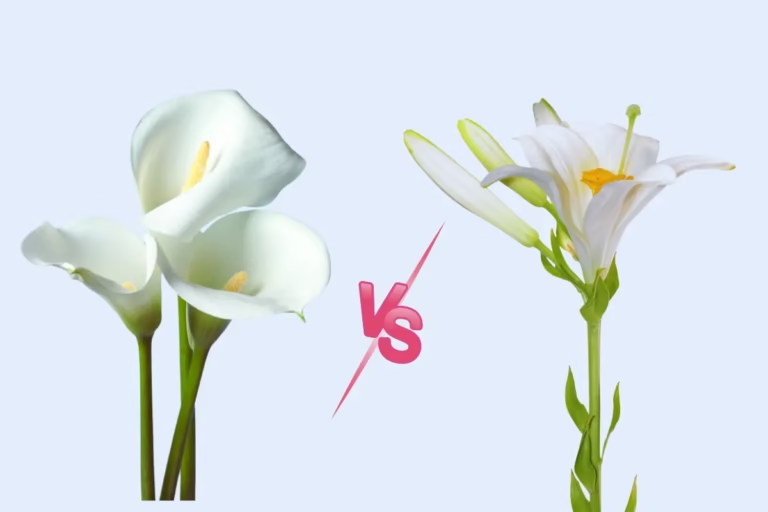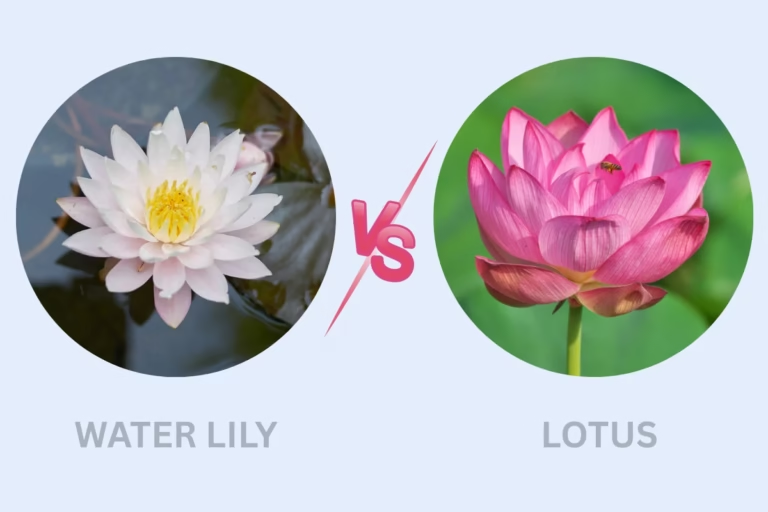How to Plant, Grow, and Care for Delphinium Flowers

Delphiniums, often called the “queen of the garden,” are stunning perennial flowers known for their tall spikes of vibrant blue, purple, pink, or white blooms. These elegant plants add a touch of majesty to any garden or floral arrangement, symbolizing joy and positivity. However, growing Delphiniums can be a challenge—whether it’s dealing with their sensitivity to weather, battling pests like slugs, or struggling to get them to bloom consistently. If you’ve ever felt frustrated by these issues, you’re not alone. But don’t give up! Imagine the pride and joy of seeing those towering blooms sway in the breeze, knowing your care and patience made it possible. With the right tips and a little love, you can turn your Delphinium dreams into reality.
What Is Delphiniums?
|
Category |
Details |
|---|---|
|
Scientific Name |
Delphinium (Common species: Delphinium elatum, Delphinium grandiflorum) |
|
Other Names |
Larkspur, Candleflower, Knight’s Spur |
|
Mature Size |
3 to 6 feet tall, 1 to 2 feet wide |
|
Hardiness Zone |
USDA Zones 3 to 7 (some varieties up to Zone 9) |
|
Soil pH |
Slightly acidic to neutral (6.0 to 7.5) |
|
Sunlight |
Full sun to partial shade (at least 6 hours of sunlight daily) |
|
Watering Needs |
Regular watering, keeping soil moist but well-drained |
|
Bloom Time |
Early to mid-summer (some varieties rebloom in fall) |
|
Flower Colors |
Blue, purple, pink, white, and bi-colors |
|
Toxicity |
Toxic to humans, pets, and livestock if ingested |
|
Common Uses |
Garden borders, cut flowers, floral arrangements, wedding bouquets |
|
Companion Plants |
Roses, peonies, daisies, and other perennials |
|
Challenges |
Susceptible to slugs, powdery mildew, and crown rot |
Types of Delphinium
Delphiniums come in a variety of stunning types, each with its unique charm. Here are five popular varieties you should know:
- Delphinium elatum (Pacific Giants)
Known for their towering spikes and vibrant blue delphinium blooms, these are a favorite among gardeners. They can grow up to 6 feet tall and are perfect for adding height to garden borders. - Bella Delphinium
A compact variety, Bella delphinium is ideal for smaller gardens or containers. It produces dense spikes of light blue delphinium and white delphinium flowers, making it versatile for floral arrangements. - Delphinium grandiflorum (Chinese Delphinium)
This variety is shorter (1-2 feet) and features delicate, delphinium flowers in shades of blue, purple, and pink. It’s perfect for rock gardens or as a ground cover. - Delphinium ‘Black Knight’
A dramatic variety, Delphinium ‘Black Knight’ boasts deep purple, almost black flowers with a striking white center. It’s a showstopper in any garden. - Delphinium consolida (Larkspur)
Often confused with true Delphiniums, Delphinium consolida larkspur is an annual variety with feathery delphinium leaves and blooms in shades of pink delphinium, blue, and white. It’s great for wildflower gardens.
Delphinium Care
Growing delphinium plants can seem daunting, but with these pro tips, even beginners can succeed:
- Start with healthy plants or seeds from a reputable source.
- Choose a location with good air circulation to prevent diseases.
- Stake taller varieties early to avoid breakage from wind or rain.
- Deadhead spent blooms to encourage reblooming.
- Be patient—Delphiniums can take time to establish but are worth the wait!
Light Requirements
Delphiniums thrive in full sun but appreciate some afternoon shade in hotter climates. Aim for at least 6 hours of sunlight daily to ensure vibrant delphinium flowers.
Soil
These plants prefer rich, well-draining soil with a slightly acidic to neutral pH (6.0 to 7.5). Amend heavy clay soils with compost to improve drainage.
Fertilizers
Feed delphinium plants with a balanced fertilizer in early spring and again after the first bloom. Avoid over-fertilizing, as it can lead to weak stems.
Temperature
Delphiniums prefer cooler climates and thrive in temperatures between 58°F and 76°F. In hotter regions, provide afternoon shade to prevent stress.
Humidity
Moderate humidity is ideal. High humidity can lead to fungal diseases, so ensure proper spacing and air circulation around delphinium plants.
Watering
Keep the soil consistently moist but not waterlogged. Water at the base to avoid wetting the delphinium leaves, which can lead to mildew.
How to grow Delphinium Plants
Growing Delphiniums can be a rewarding experience with the right knowledge. These majestic flowers require specific conditions to thrive, but the effort is worth the stunning results. Let’s explore the best ways to grow healthy Delphiniums.
Growing from Seeds
- Start delphinium seeds indoors 8-10 weeks before the last frost.
- Surface-sow the seeds, as they need light to germinate.
- Keep the soil moist but not waterlogged during germination.
- Transplant seedlings outdoors after the danger of frost has passed.
- Space seedlings 12-18 inches apart for proper growth.
Growing from Cuttings
- Take basal cuttings from healthy delphinium plants in early spring.
- Use a sharp, sterilized knife to cut just below a leaf node.
- Dip the cuttings in rooting hormone to encourage root development.
- Plant the cuttings in well-draining soil and keep them in a humid environment.
- Transplant rooted cuttings into the garden once they’re established.
Transplanting Seedlings
- Choose a sunny location with well-draining soil for your delphinium seedlings.
- Space seedlings 12-18 inches apart to ensure proper air circulation.
- Dig a hole slightly larger than the root ball of the seedling.
- Water thoroughly after transplanting to help the roots settle.
- Mulch around the base to retain moisture and regulate soil temperature.
Planting Delphiniums
Planting Delphiniums correctly sets the foundation for their growth and blooming. Choosing the right time, location, and method is crucial for success. Here’s everything you need to know about planting Delphiniums.
When to Plant
- Plant delphinium seeds indoors 8-10 weeks before the last frost.
- Transplant seedlings outdoors after the danger of frost has passed.
- Fall planting is also possible in milder climates for early spring blooms.
Where to Plant
- Choose a location with full sun (at least 6 hours daily).
- Ensure the soil is rich, well-draining, and slightly acidic to neutral (pH 6.0-7.5).
- Avoid areas with strong winds, as delphinium plants can topple over.
How to Plant
- Dig a hole twice the size of the root ball.
- Place the seedling in the hole and backfill with soil.
- Water thoroughly and mulch to retain moisture.
Delphiniums Bloom
Delphiniums are known for their breathtaking blooms that add elegance to any garden. Understanding their blooming cycle and how to encourage flowers is key. Let’s dive into the world of Delphinium blooms.
Best Bloom Time/Season
- Delphiniums typically bloom in early to mid-summer.
- Some varieties rebloom in fall if deadheaded regularly.
- Cooler climates encourage longer and more vibrant blooming periods.
Encouraging Blooms
- Provide full sun and well-draining soil for optimal growth.
- Deadhead spent flowers to promote reblooming.
- Fertilize with a balanced fertilizer during the growing season.
Bloom Colors and Varieties
- Delphinium flowers come in shades of blue, purple, pink, and white.
- Popular varieties include Delphinium elatum (Pacific Giants) and Delphinium ‘Black Knight’.
- Mix and match colors for a stunning garden display.
Propagation of Delphiniums
Propagating Delphiniums allows you to expand your garden without buying new plants. Whether from seeds, cuttings, or division, each method has its own steps. Here’s how to propagate Delphiniums successfully.
Step-By-Step Guide
- Start delphinium seeds indoors 8-10 weeks before the last frost.
- Surface-sow seeds, as they need light to germinate.
- Keep the soil moist and maintain a temperature of 65-75°F.
- Transplant seedlings outdoors after the last frost.
- Take basal cuttings from healthy delphinium plants in early spring.
- Dip cuttings in rooting hormone and plant in well-draining soil.
- Cover cuttings with a plastic bag to retain humidity.
- Divide mature plants every 2-3 years in early spring or fall.
- Replant divisions immediately and water thoroughly.
- Label propagated plants to track varieties and planting dates.
Issues, Pests, and Their Solutions
Delphiniums can face challenges like pests and diseases, but with the right care, these issues can be managed. Identifying problems early is crucial for healthy plants. Let’s tackle common Delphinium issues.
Slugs and Snails
- Handpick pests or use organic slug pellets.
- Create barriers with crushed eggshells or diatomaceous earth.
Powdery Mildew
- Ensure proper air circulation around delphinium plants.
- Apply fungicides or neem oil at the first sign of infection.
Crown Rot
- Avoid overwatering and ensure well-draining soil.
- Remove affected plants to prevent spreading.
Aphids
- Spray with a strong stream of water to dislodge aphids.
- Use insecticidal soap or neem oil for severe infestations.
Toxicity Concerns
- Delphinium leaves and seeds are toxic to humans and pets.
- Handle with gloves and keep away from children and animals.
Pruning and Potting/Repotting
Pruning and repotting are essential for keeping Delphiniums healthy and vibrant. Proper techniques ensure strong growth and prevent overcrowding. Let’s explore how to prune and pot Delphiniums effectively.
Pruning
- Deadhead spent blooms to encourage reblooming.
- Cut back stems to the ground in fall after the first frost.
- Prune damaged or diseased leaves to maintain plant health.
Potting and Repotting
- Use a large pot with drainage holes for delphinium plants.
- Repot every 2-3 years to refresh the soil and prevent root-bound plants.
- Water thoroughly after repotting to help the roots settle.
Related Blog: Begonia Mallacoota: Grow and Care the Rare Australian Beauty
Decorations with Delphiniums
Delphiniums are a versatile choice for adding elegance to any space. Here are some creative ways to use them:
- Garden Borders: Plant tall delphinium flowers at the back of borders for a dramatic backdrop.
- Cut Flowers: Use blue delphinium or white delphinium in floral arrangements for weddings or events.
- Containers: Grow compact varieties like Bella delphinium in pots for patios or balconies.
- Wildflower Gardens: Mix delphinium consolida larkspur with other wildflowers for a natural look.
- Cottage Gardens: Pair delphinium plants with roses and daisies for a charming, rustic vibe.
Why You Will Choose Delphiniums
- Stunning Beauty: Their tall spikes of delphinium flowers in shades of blue, purple, pink, and white are breathtaking.
- Versatility: Perfect for gardens, floral arrangements, and even containers.
- Symbolism: Delphiniums symbolize joy, positivity, and new opportunities.
- Pollinator-Friendly: Attract bees and butterflies to your garden.
- Long Blooming Season: With proper care, they bloom from early summer to fall.
- Easy Propagation: Grow more plants from seeds, cuttings, or division.
- Garden Focal Point: Their height and vibrant colors make them a standout feature.
- Emotional Appeal: The sight of delphinium colors swaying in the breeze brings peace and joy.



